Health Care > HESI MED SURG > HESI MED SURG NCLEX PRACTICE QUESTIONS & ANSWERS/ Latest Solution (All)
HESI MED SURG NCLEX PRACTICE QUESTIONS & ANSWERS/ Latest Solution
Document Content and Description Below
1. The nurse assesses a patient with shortness of breath for evidence of long-standing hypoxemia by inspecting: A. Chest excursion B. Spinal curvatures C. The respiratory pattern D. The fingernail... and its base (ANS- D. The fingernail and its base Clubbing, a sign of long-standing hypoxemia, is evidenced by an increase in the angle between the base of the nail and the fingernail to 180 degrees or more, usually accompanied by an increase in the depth, bulk, and sponginess of the end of the finger. 2. The nurse is caring for a patient with COPD and pneumonia who has an order for arterial blood gases to be drawn. Which of the following is the minimum length of time the nurse should plan to hold pressure on the puncture site? A. 2 minutes B. 5 minutes C. 10 minutes D. 15 minutes (ANS- B. 5 minutes Following obtaining an arterial blood gas, the nurse should hold pressure on the puncture site for 5 minutes by the clock to be sure that bleeding has stopped. An artery is an elastic vessel under higher pressure than veins, and significant blood loss or hematoma formation could occur if the time is insufficient. 3. The nurse notices clear nasal drainage in a patient newly admitted with facial trauma, including a nasal fracture. The nurse should: A. test the drainage for the presence of glucose. B. suction the nose to maintain airway clearance. C. document the findings and continue monitoring. D. apply a drip pad and reassure the patient this is normal. (ANS- A. test the drainage for the presence of glucose. Clear nasal drainage suggests leakage of cerebrospinal fluid (CSF). The drainage should be tested for the presence of glucose, which would indicate the presence of CSF. 4. When caring for a patient who is 3 hours postoperative laryngectomy, the nurse's highest priority assessment would be: A. Airway patency B. Patient comfort C. Incisional drainage D. Blood pressure and heart rate (ANS- A. Airway patency Remember ABCs with prioritization. Airway patency is always the highest priority and is essential for a patient undergoing surgery surrounding the upper respiratory system. 5. When initially teaching a patient the supraglottic swallow following a radical neck dissection, with which of the following foods should the nurse begin? A. Cola B. Applesauce C. French fries D. White grape juice (ANS- A. ColaWhen learning the supraglottic swallow, it may be helpful to start with carbonated beverages because the effervescence provides clues about the liquid's position. Thin, watery fluids should be avoided because they are difficult to swallow and increase the risk of aspiration. Nonpourable pureed foods, such as applesauce, would decrease the risk of aspiration, but carbonated beverages are the better choice to start with. [Show More]
Last updated: 1 year ago
Preview 1 out of 71 pages
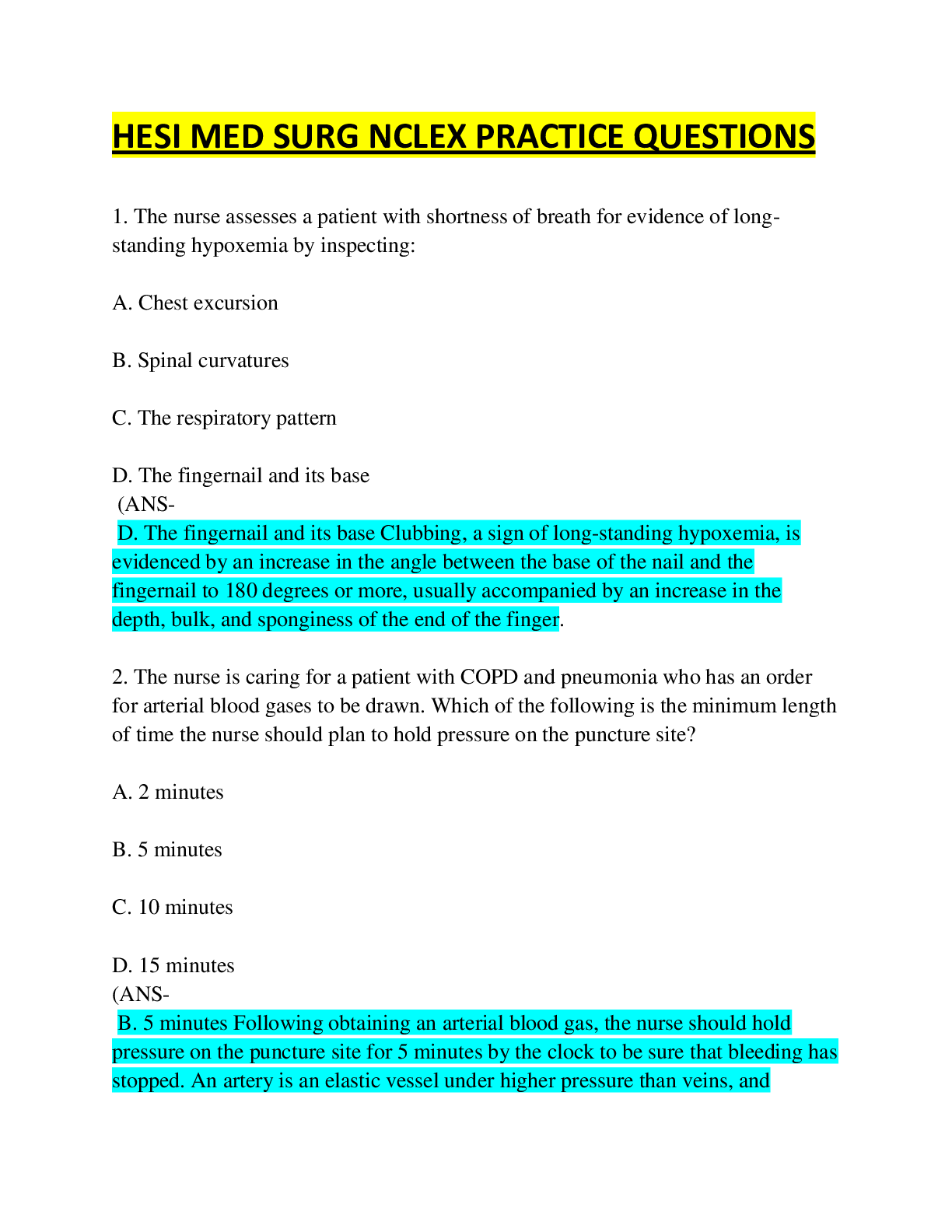
Reviews( 0 )
Document information
Connected school, study & course
About the document
Uploaded On
Jun 15, 2022
Number of pages
71
Written in
Additional information
This document has been written for:
Uploaded
Jun 15, 2022
Downloads
0
Views
85


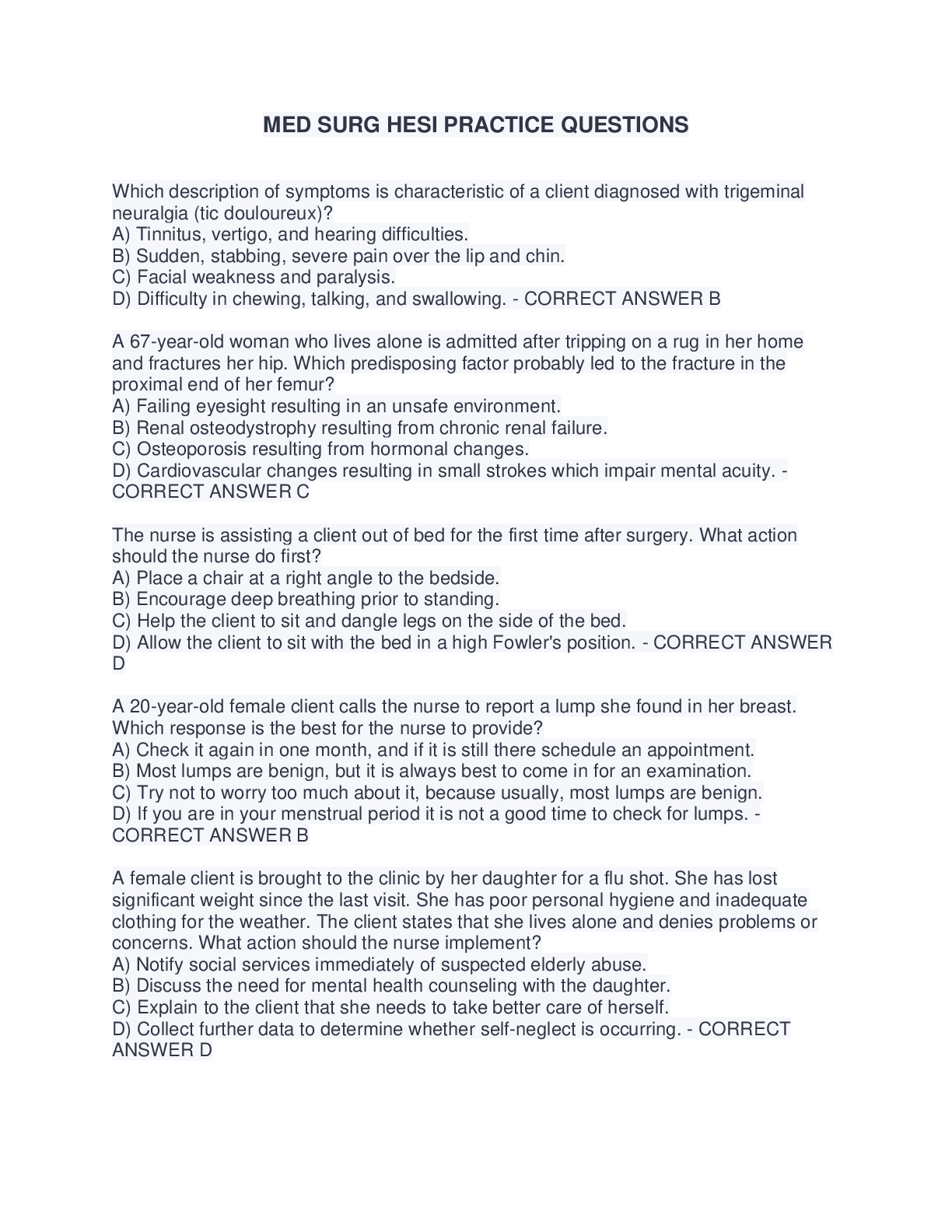



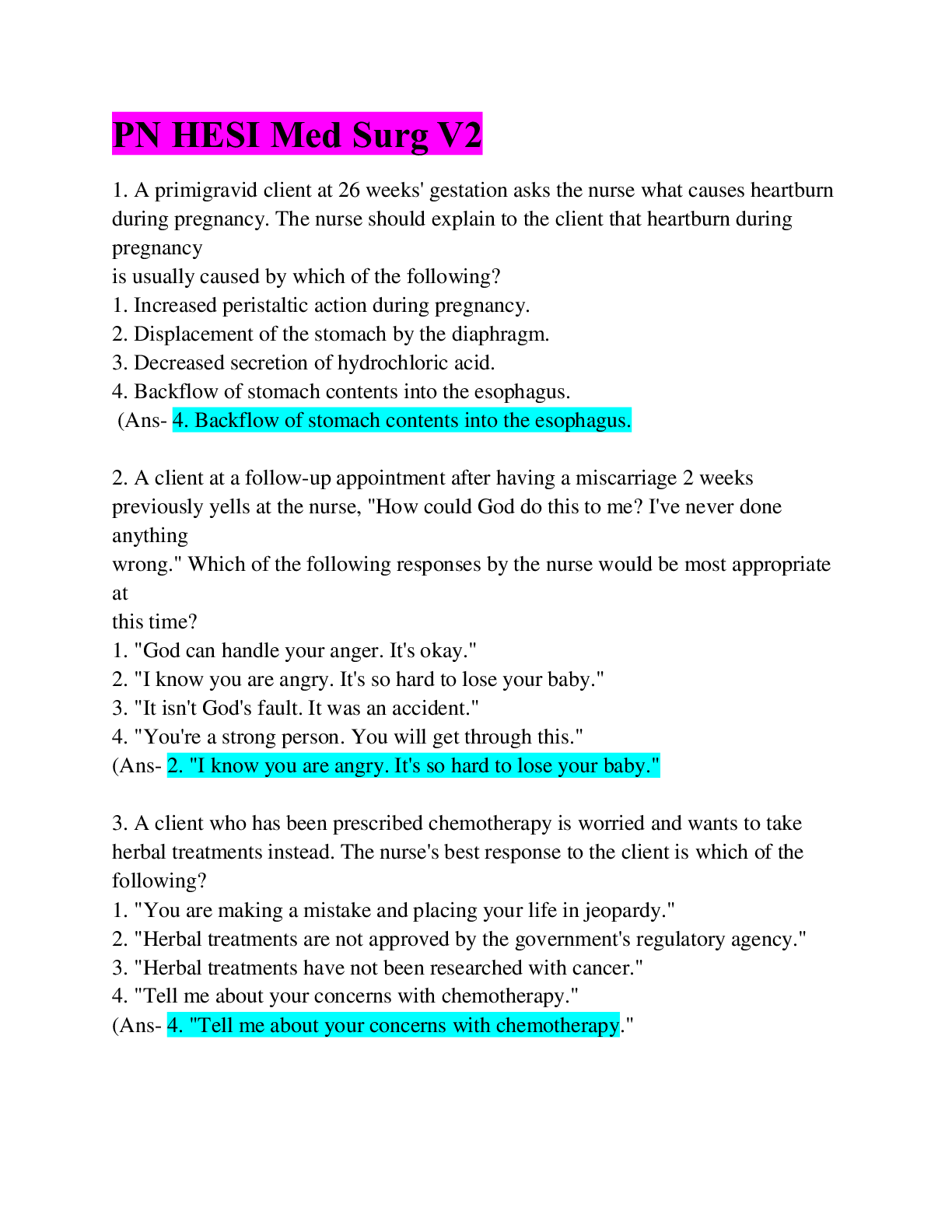
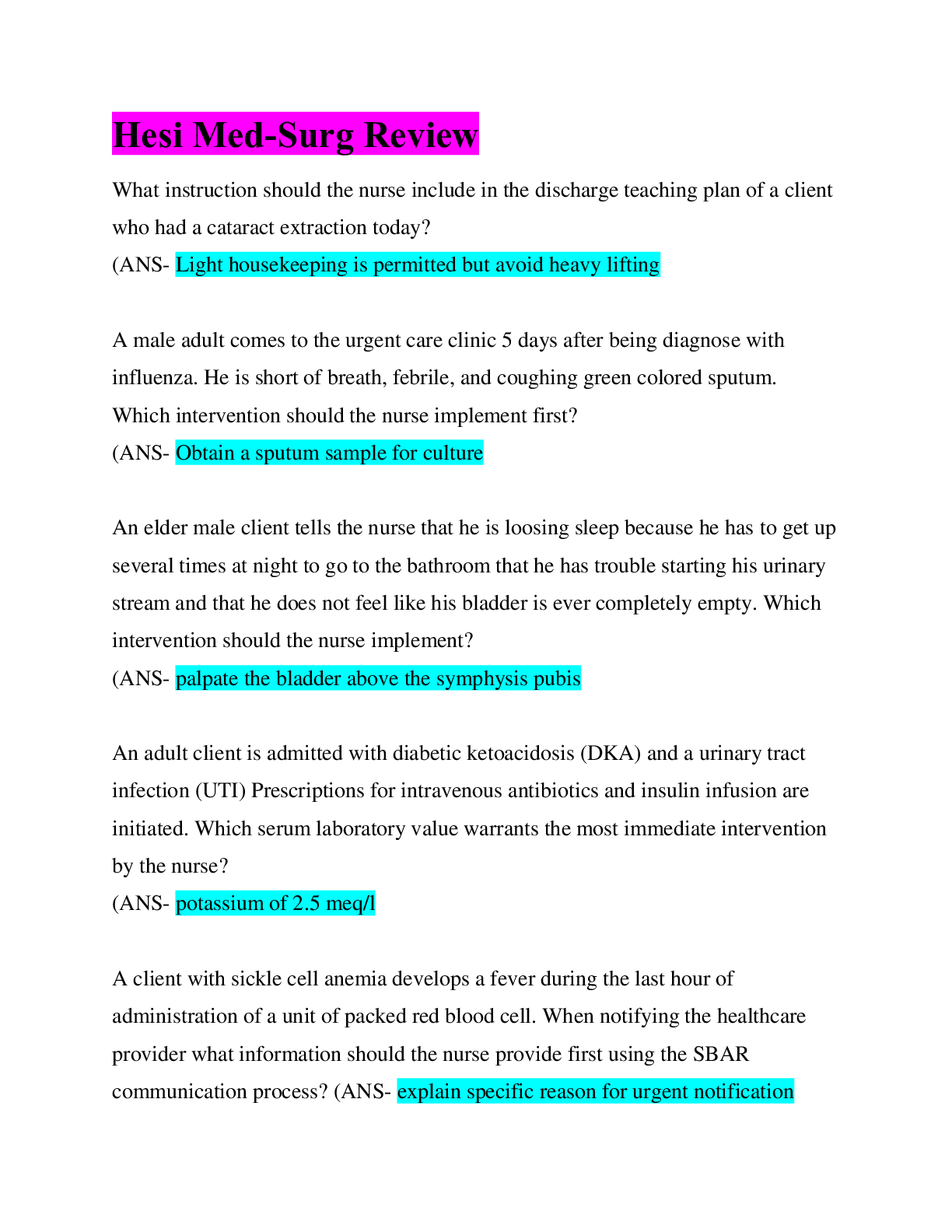
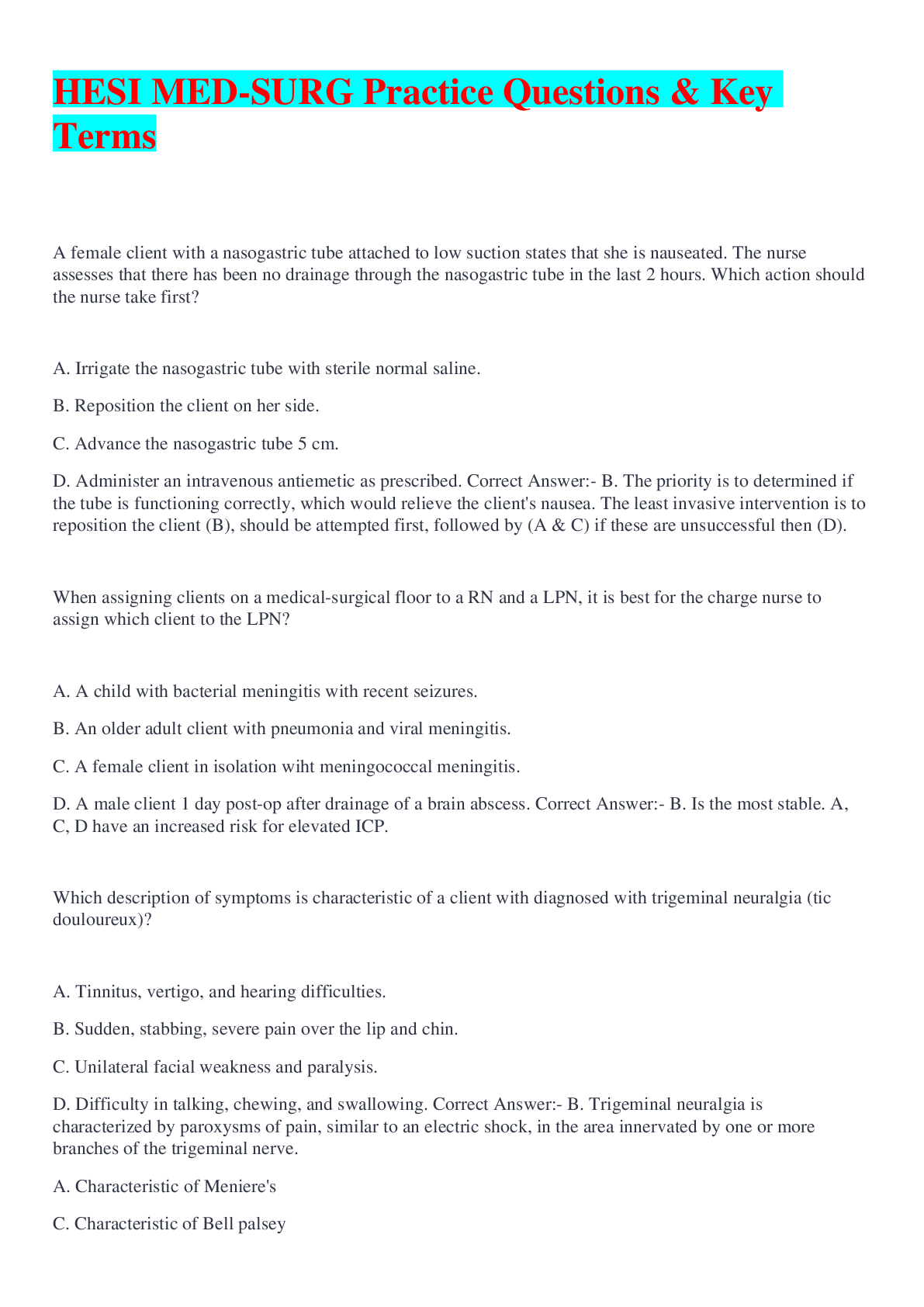
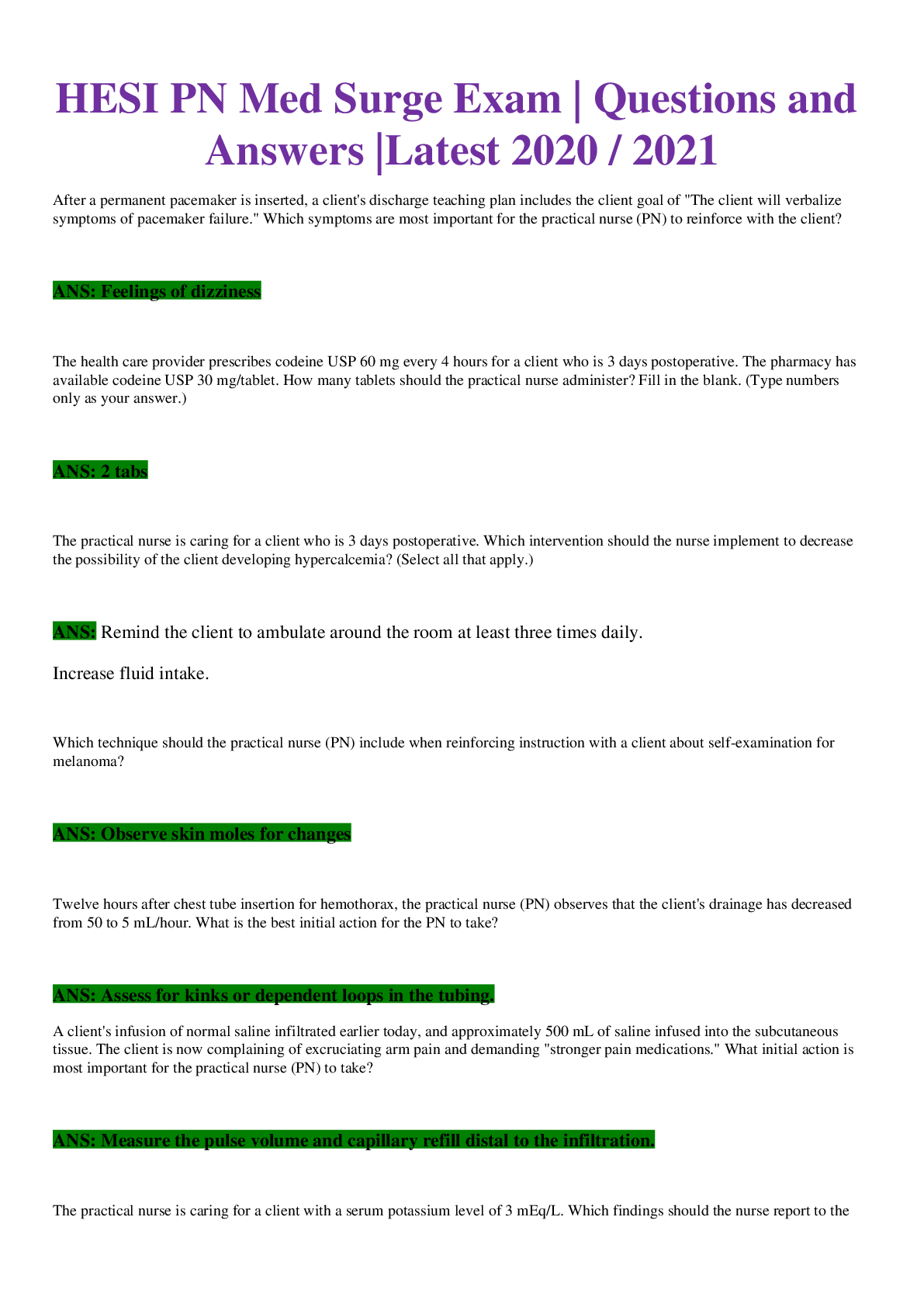

 Test Bank.png)
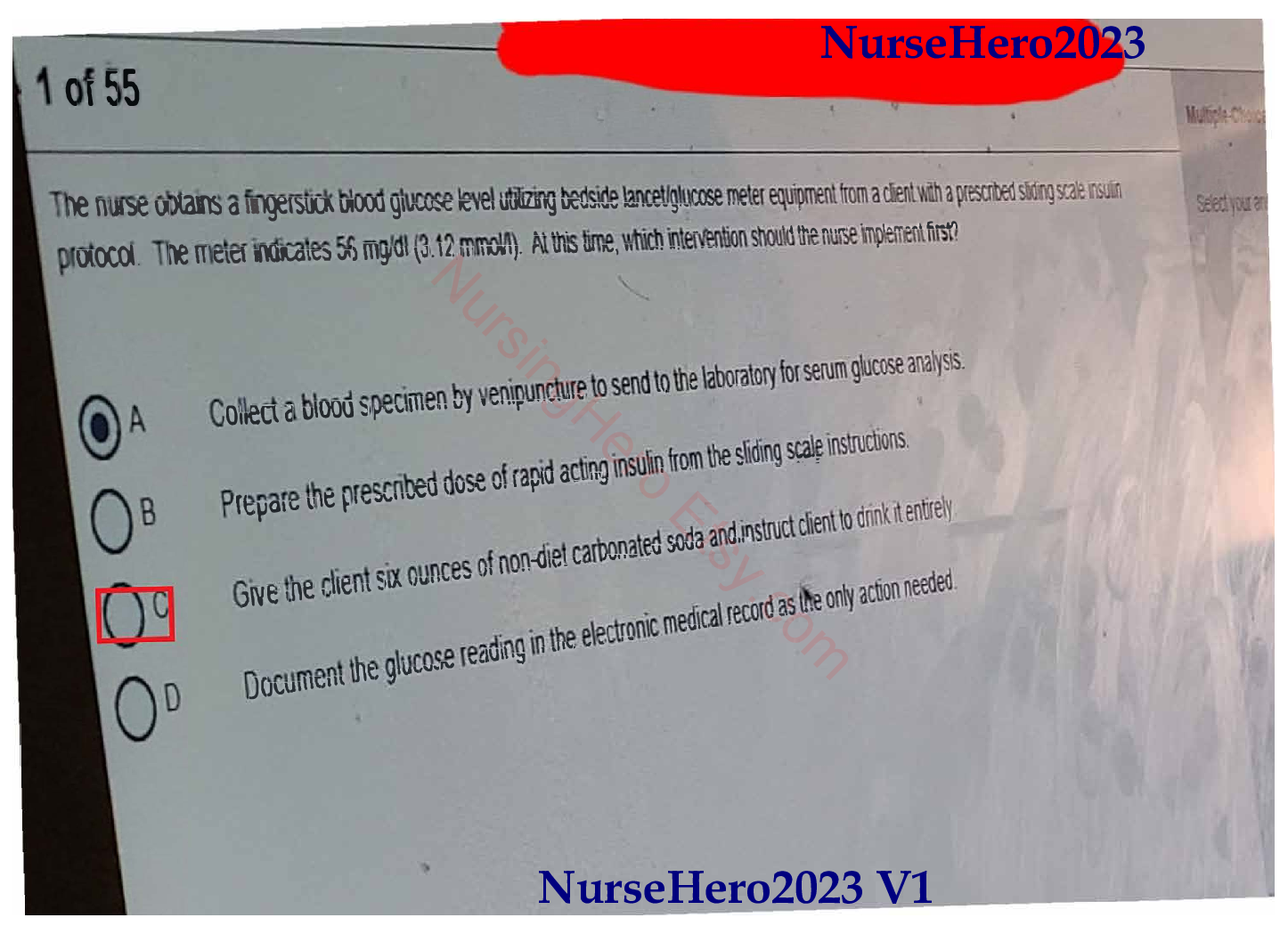

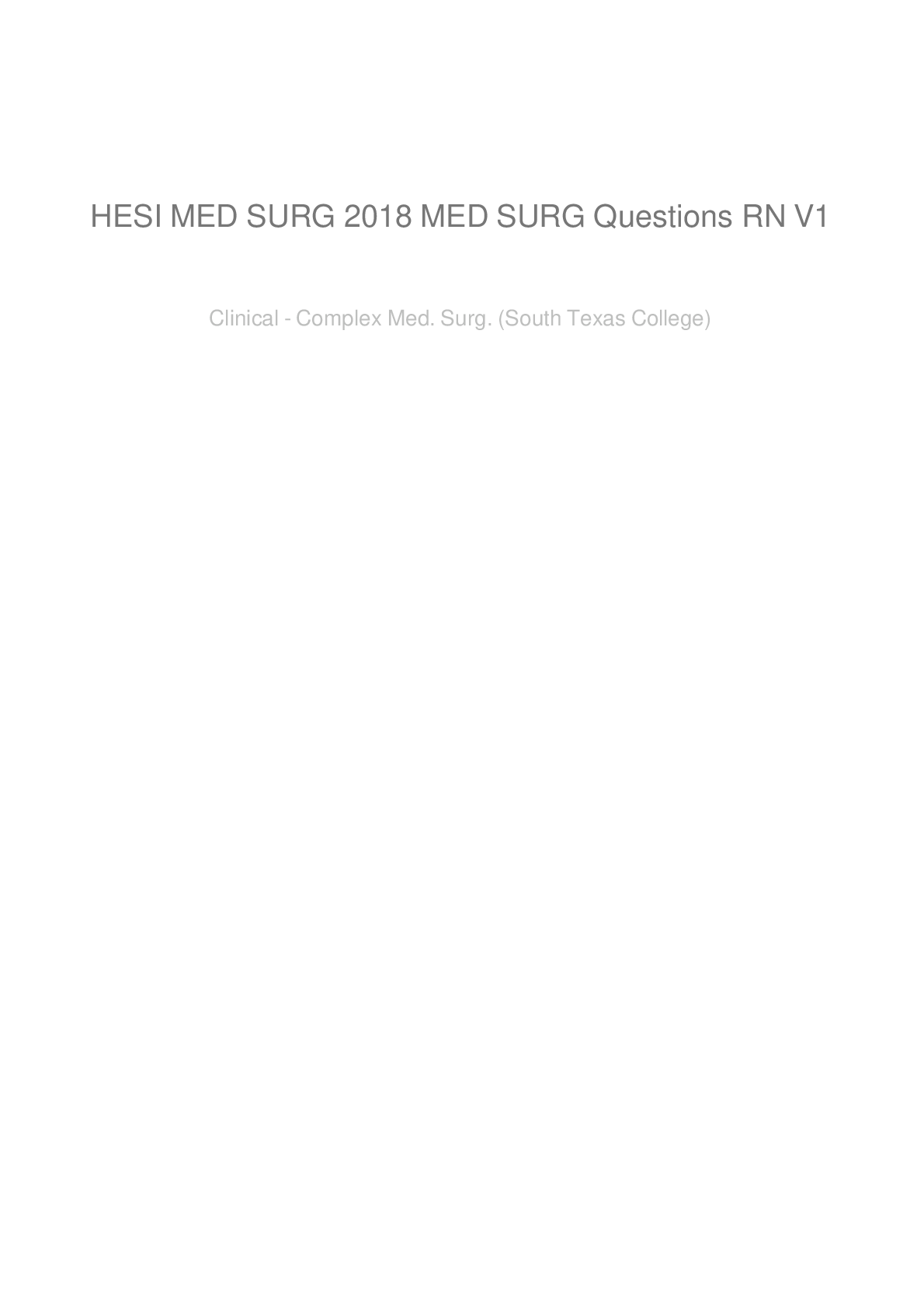
.png)
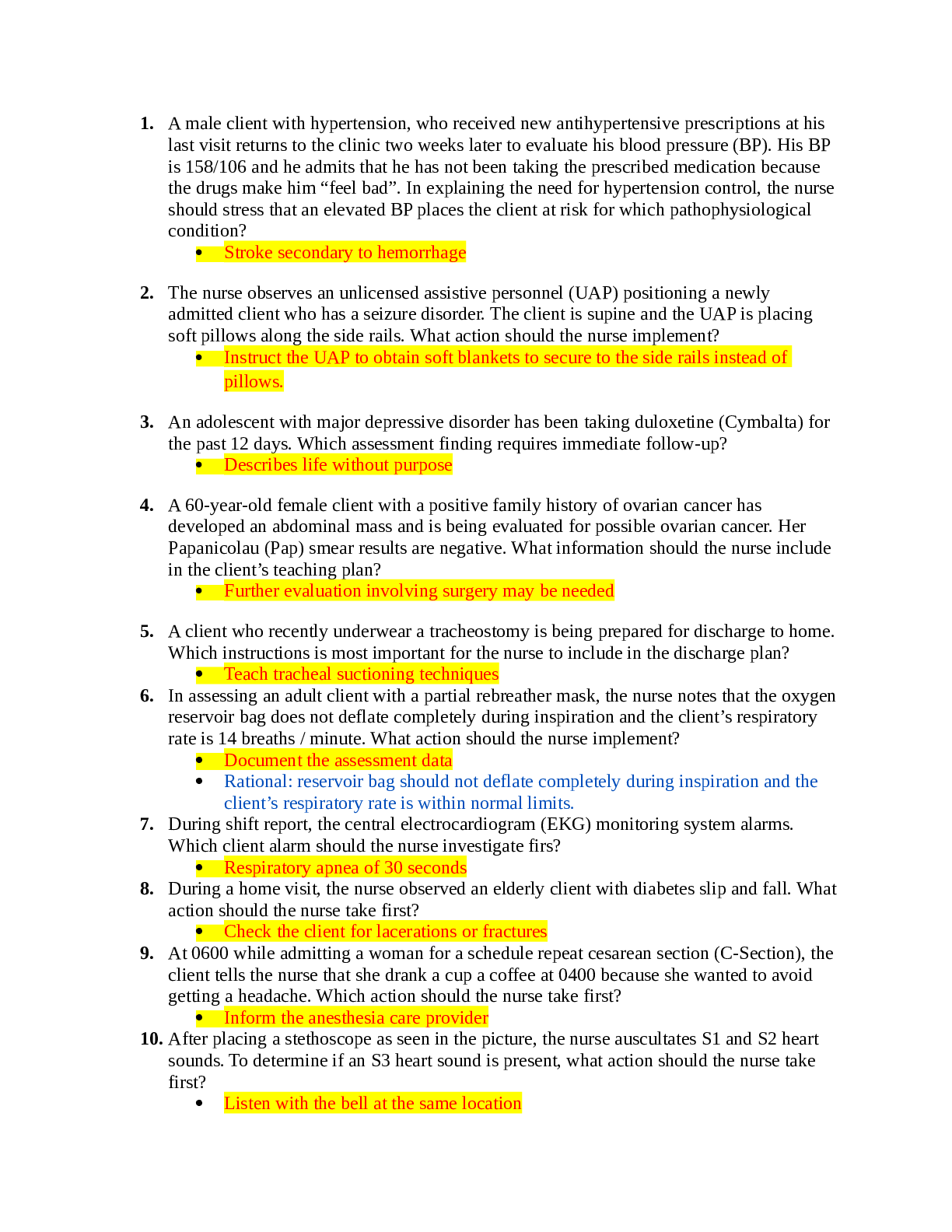
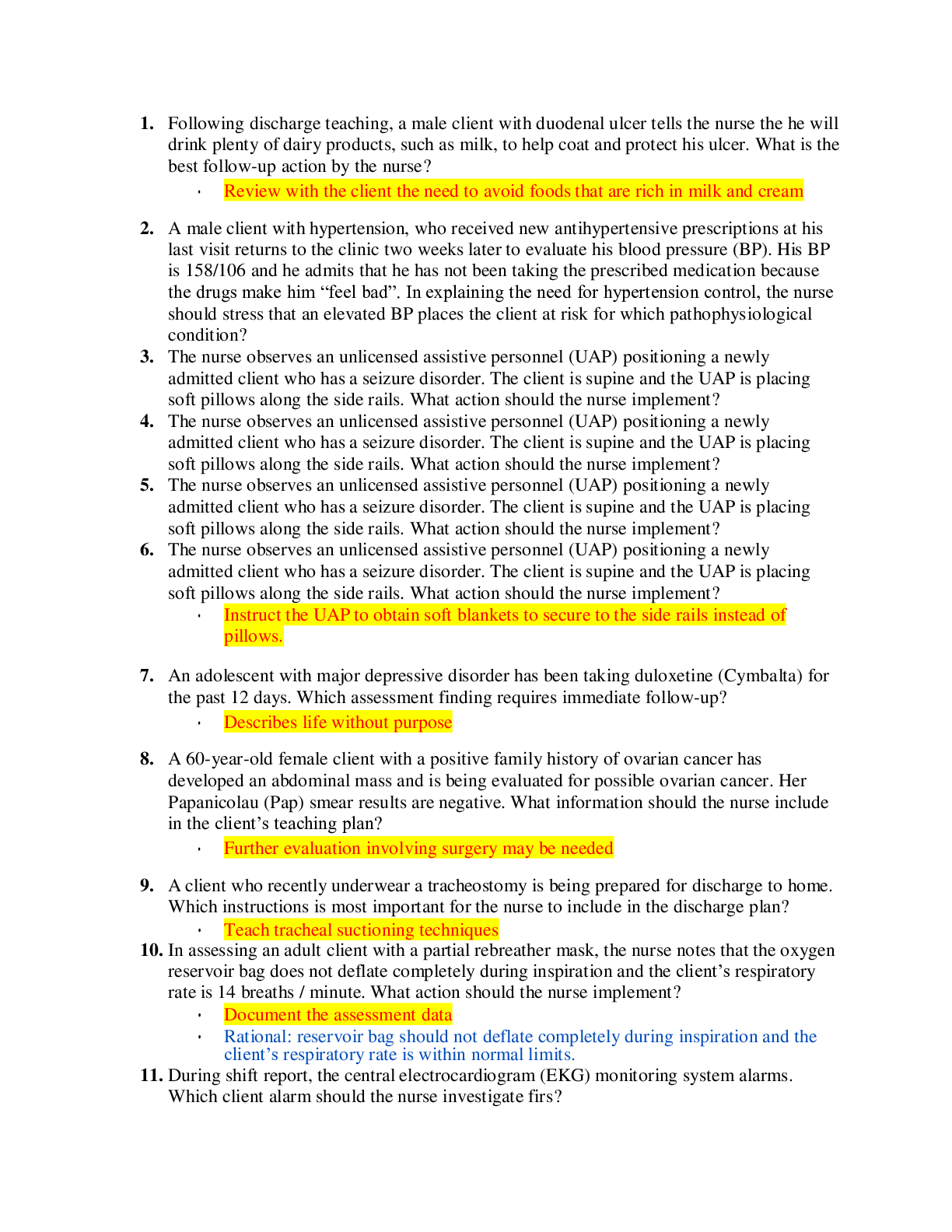
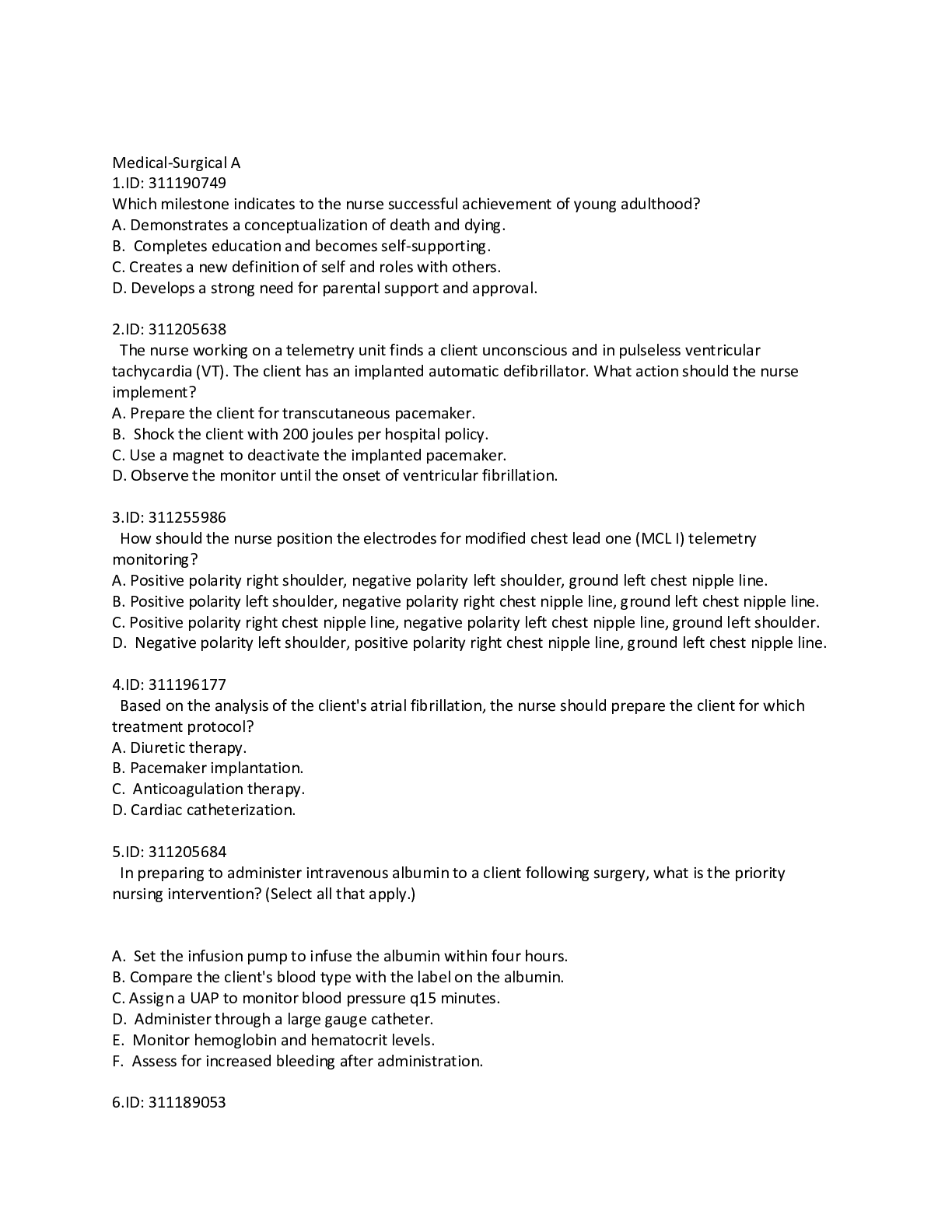

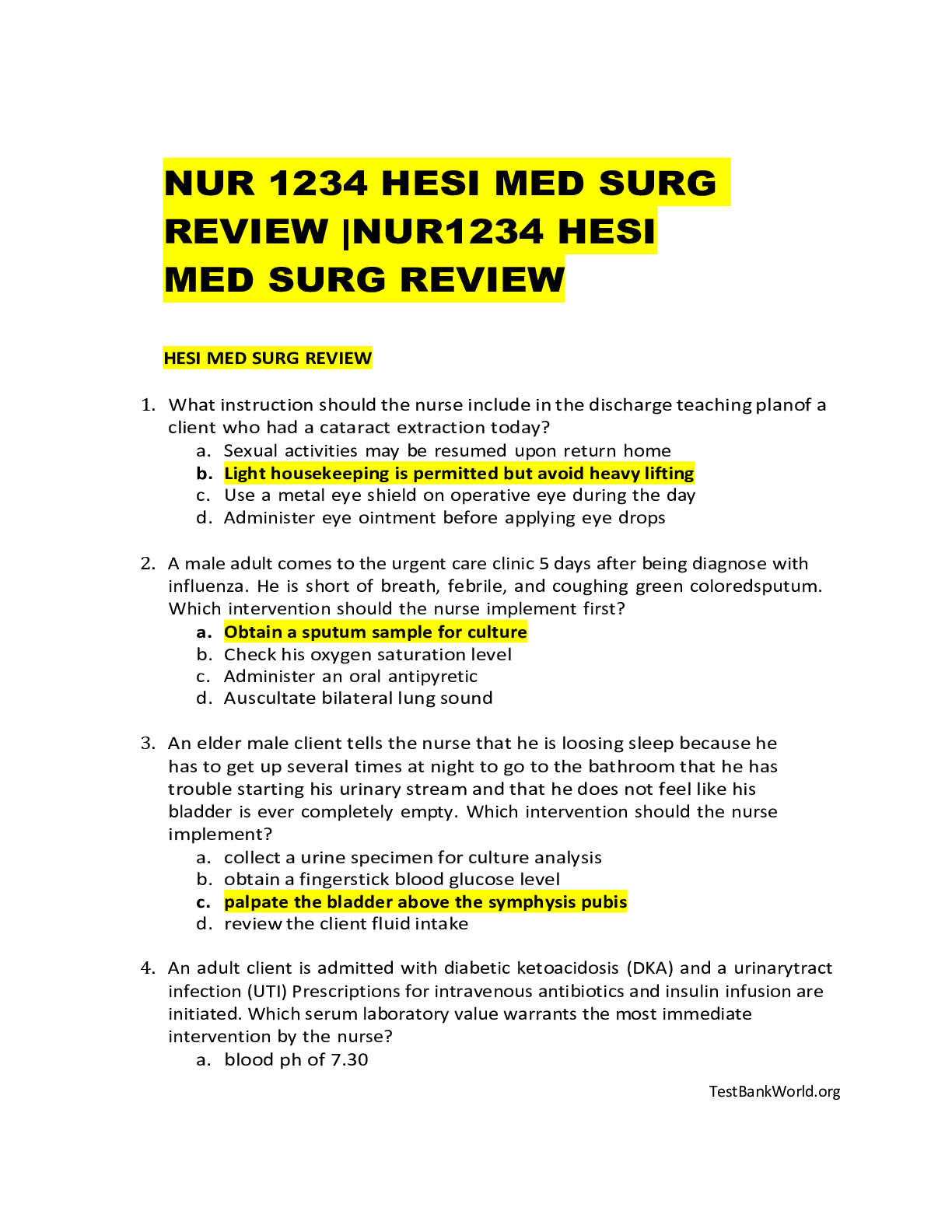
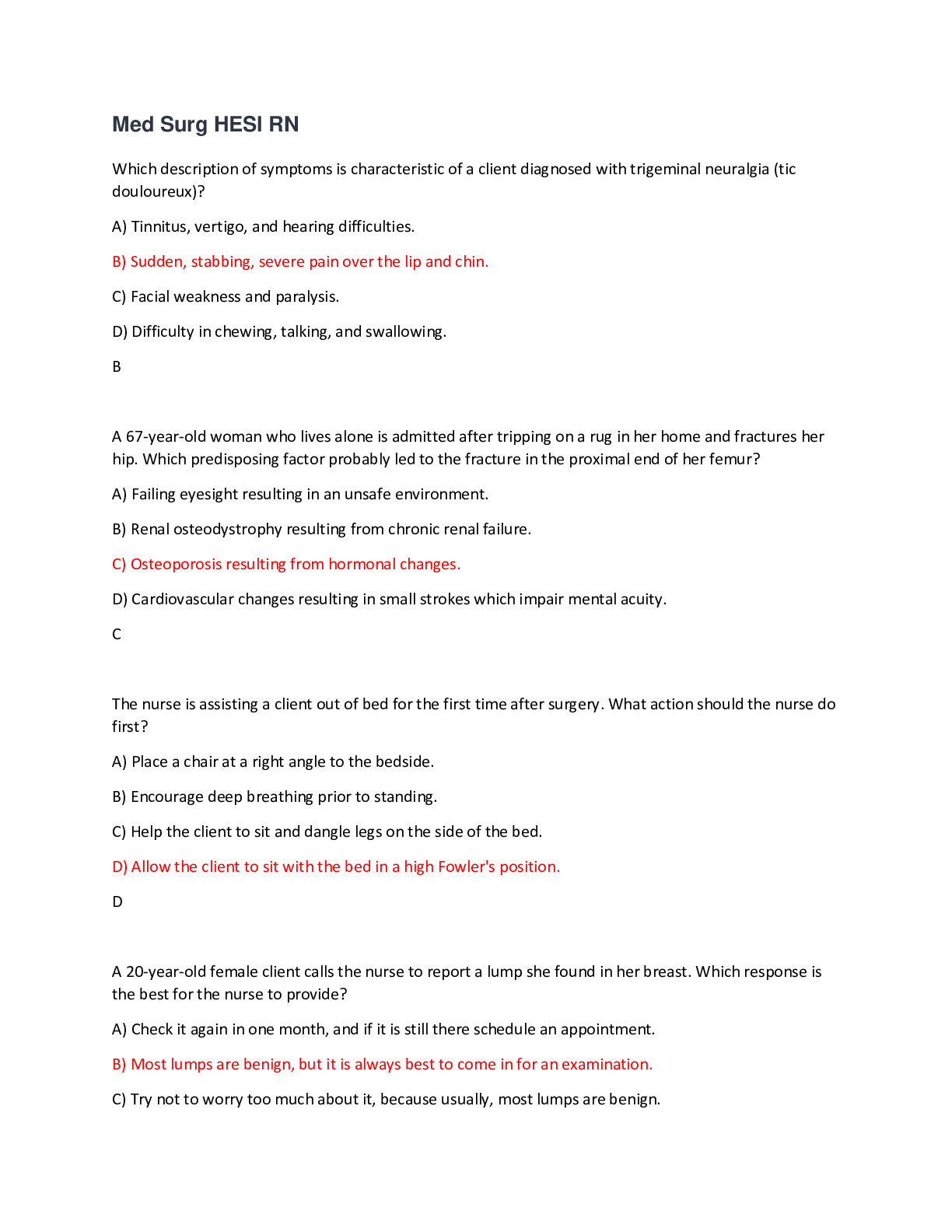

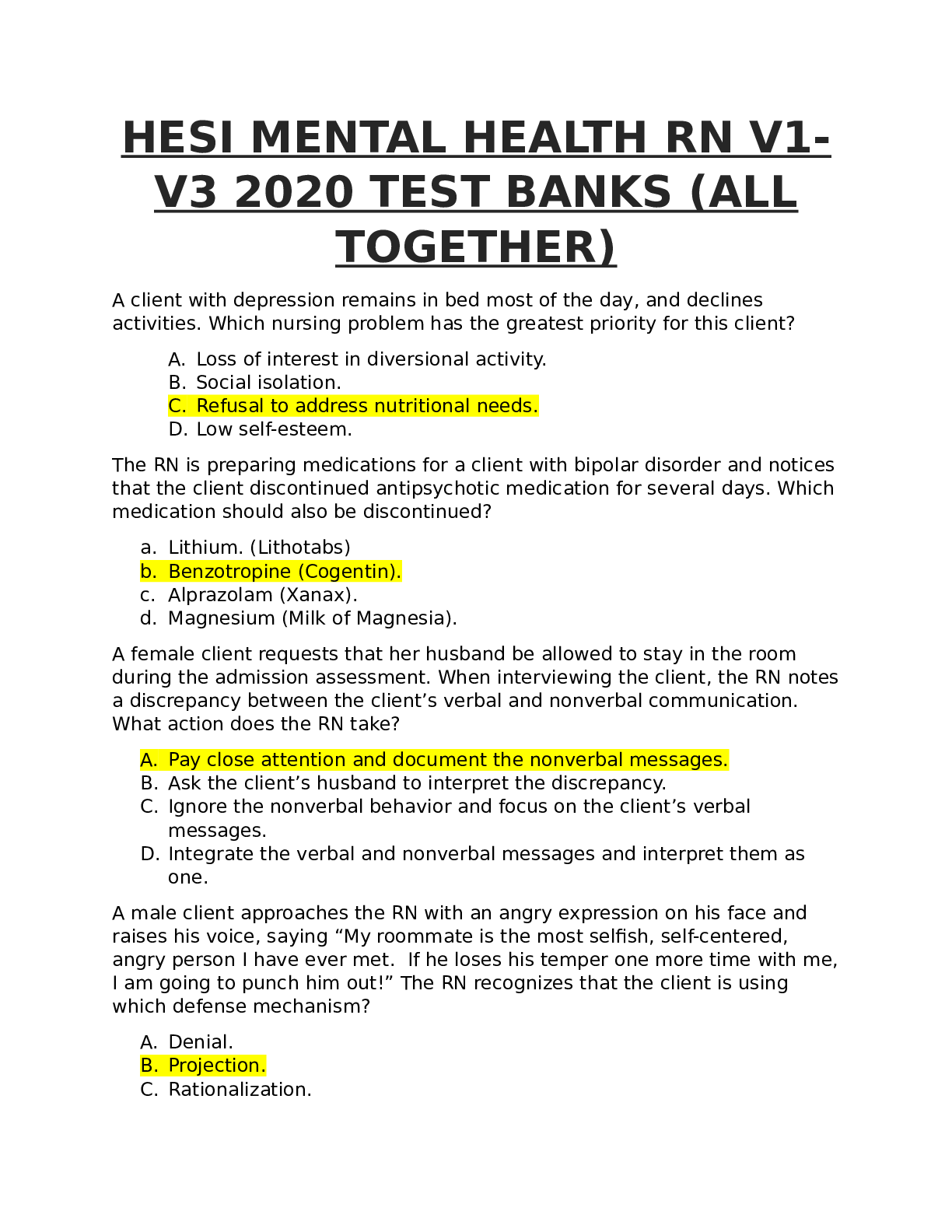
.png)
 Correct Study Guide, Download to Score A.png)

